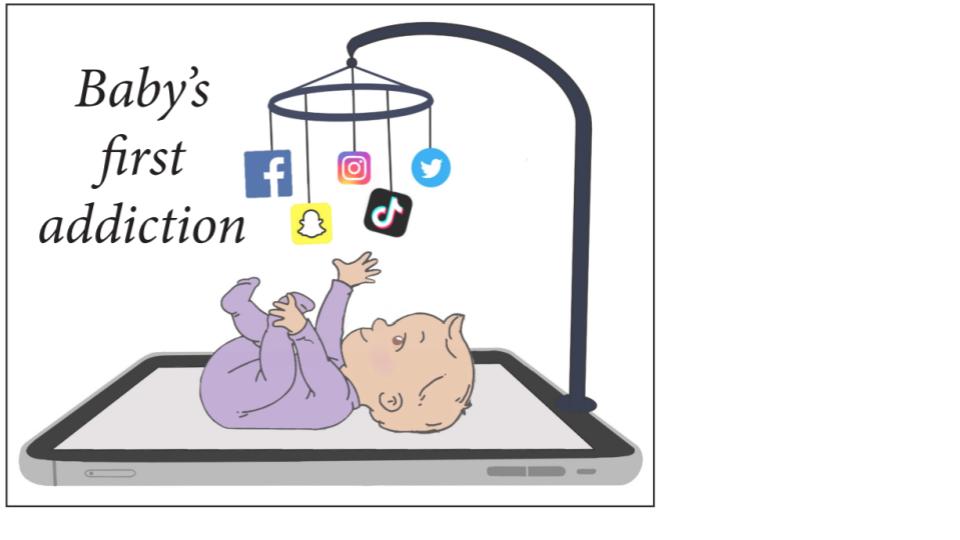
Feb. 5, 2023
Everywhere we turn, we are bombarded with messages, notifications and posts from our peers. We spend hours scrolling through our feeds, liking and commenting on posts and sharing our own content. However, in our attempt to stay connected, social media has ended up consuming our lives.
Addiction to social media is now common among people of all age groups. The use of phones and other mobile devices has become so pervasive that even babies and young children are using them, which has led to the term “iPad kids.”
According to the American Academy of Pediatrics, up to 75% of young children have their own tablets, and infants are handling mobile devices during the first year of life. This is harmful because young children are not developmentally ready to handle these devices.
One of the main problems with social media is that it has created a culture of comparison and illusion where people are constantly comparing themselves to others in an effort to create an idealized version of themselves.
As a result of social media, people constantly see what their friends and family are doing, how they look and what they have achieved. People also compare themselves to celebrities and influencers who appear to have perfect bodies and exciting lives. This can lead to feelings of inadequacy and insecurity.
Adding to the sense of inadequacy that social media creates, the culture of FOMO, which stands for “fear of missing out,” has become increasingly prevalent. This feeling is often triggered by seeing posts of friends and acquaintances having fun or engaging in activities from which the viewer feels excluded.
Social media causes people to try to make their lives look like a highlight reel. People can become so focused on how they appear to others that they forget to appreciate their authentic experiences.
It is easy to get sucked into the endless cycle of scrolling through your newsfeed and checking out what your friends are up to.
Most social media users experience dissociation, which is a psychological phenomenon in which a person feels disconnected from their environment, thoughts and feelings. This can be a result of spending too much time on social media, as it can lead to a disconnect from reality and a lack of meaningful connections with others.
One of the most important aspects of social media is the concept of social currency, which is the value that is placed on likes, follows and other forms of engagement. Social currency is a way of measuring the value of a user’s presence on social media and quantifying the impact that a user has on the platform.
The more likes, follows and other forms of engagement a user has, the more valuable they appear to be. This is why many people strive to increase their social currency, as it can be regarded as a sign of success and influence.
Social media also leads to procrastination. According to a survey conducted by the University of Nevada, nearly 90% of teenagers reported that they put off their work because of social media.

ILLUSTRATION BY KYLA MARINO
The main reason why social media leads to procrastination is that it is so easy to get distracted by it. With so many different platforms, it can be hard to stay focused on the task at hand.
Additionally, constant notifications and updates can be a major source of distraction. It is easy to get sucked into the endless cycle of scrolling through your newsfeed and checking out what your friends are up to.
The negative effects of social media are undeniable, so it is problematic that the average age a child starts using social media has decreased from 14 in 2012 to 13 in 2021, according to a survey by Common Sense Media.
As children and teens are increasingly exposed to social media at a young age, it is important to ensure that they know how to limit its negative effects. Therefore, parents and educators need to be aware of social media’s potential risks and take steps to ensure that Gen Alpha and Gen Z are using social media responsibly.


